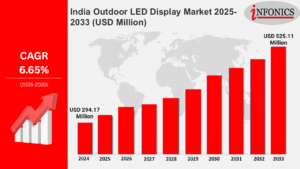Hey, have you ever found yourself spellbound by the mesmerizing displays of LED video walls? Those vibrant, larger-than-life visuals that seem to transport you to another world? If you own or plan to buy this technology and want to know if it’s worth it and how to maintain it properly, this blog is for you.
Here we will provide you with expert insights on how to maintain LED video walls for optimal performance, ensure a longer lifespan, minimize downtimes, and prioritize safety considerations.
1. Cleaning and Dust Controls:
Dust can be harmful for the LED displays as it can obstruct the light output which can result in reduced brightness and image quality. If it is not cleaned properly regularly, this can lead to overheating and damage to delicate components. Here are some of the best practices for cleaning and maintaining the LED video wall:
- Turn off and disconnect the power supply: Before cleaning the LED video wall, remember to turn off and disconnect the power supply to minimize electrical risks and ensure overall safety.
- Use soft microfiber dry cloth: You should use a dry soft microfiber cloth to gently swipe the LED display in a vertical motion. Don’t rub too hard or scrub vigorously as this can harm the LEDs.
- Don’t use abrasive cleaners: If you see any stubborn stain that cannot be removed with the dry cloth, then in this case, you can use an LED cleaning solution. Just moisten the cloth with the solution before wiping the LED video wall. Avoid applying the solution directly to it.
- Allow it to be dry: After cleaning, you should always allow the LED display to get completely dry before you turn it on.
2. Proper Ambient Lighting and Ventilation:
You might think that LED video walls are built for all types of weather resistance, that’s true. However, you can follow some best practices to enhance LED display lifespan by proper lightning and temperature control. Here is what you can do:
- Consistent Temperature Range: LED video walls perform best within a specific temperature range. It’s important to maintain a consistent temperature that falls within the manufacturer’s recommended guidelines.
- Adequate Ventilation: LED video walls generate heat and proper ventilation is necessary to dissipate that heat. Ensure that the display has sufficient airflow around it to prevent overheating. Also, avoid enclosing the video wall in tight spaces or obstructing ventilation ports.
3. Use High-Quality Content and Manage Display Settings:
When it comes to maintaining the LED displays, content and display settings also play a crucial role. LED video walls can have a problem called “burn-in” where leaving static images on the screen for a long time can cause a permanent faint residue.
By creating content that is engaging and attractive, you can reduce the likelihood of screen burn-in and prolong the durability of your screen. Also, poorly optimized content can place unnecessary stress on the LEDs. Here are some of the best practices:
- Dynamic Content: You should use dynamic content with frequent changes in scenes, transitions, and movements. This will evenly spread the load on the LED panels, avoiding image retention and making sure they wear out uniformly.
- Content Rotation: Keep your content fresh by rotating it regularly to avoid showing the same images for too long. One more thing you can do is implement a content scheduling system to automate content rotation.
- Avoid Excessive Brightness: Don’t make your LED video wall too bright. This can harm the LED video wall. You can adjust the brightness to a suitable level for the environment to balance visibility.
- Regular Calibration and Fine-Tuning: To ensure optimal performance, periodically review and adjust the display settings. It includes checking color accuracy, white balance, and any manufacturer-recommended settings.
4. Implement Proper Power Management:
As LEDs are sensitive to power fluctuations, which can shorten their lifespan and cause them to burn out prematurely. You can manage power efficiently by reducing the number of voltage spikes and surges that can damage the LED display. Here are some best practices for proper power management:
- Uninterruptible Power Supply (UPS): You can install a power backup to safeguard your LED video wall from unexpected power outages or voltage changes. UPS can provide backup power during outages.
- Power Conditioning: To filter out electrical noise and stabilize the power supply, use power conditioning equipment, such as voltage regulators or surge protectors. With these devices, you can eliminate voltage fluctuations and ensure a consistent and clean source of power.
- Scheduled Power Cycling: Make sure that your LED video wall is regularly power cycled so that the system can be reset and refreshed. It can prevent issues related to overheating, memory leaks, or software glitches. If you are not sure what intervals to power cycle, consult the manufacturer’s instructions.
- Regular System Inspections: You should perform regular inspections of your LED video wall system to identify any power-related problems or faults. Check any loose connections, damaged cables, or signs of overheating. Resolve these issues quickly to prevent further damage and ensure optimum power management.
Final Words:
To ensure optimal performance and a longer lifespan for your LED displays, be sure to adhere to these best practices, conduct regular inspections, and promptly address any concerns that may arise. For the best LED video wall experience and easy maintenance check out Infonics. Infonics LED video walls are the ultimate solution for your display needs because they not only offer hassle-free maintenance, but also guarantee 24/7 top-notch service to ensure total customer satisfaction with every purchase.




